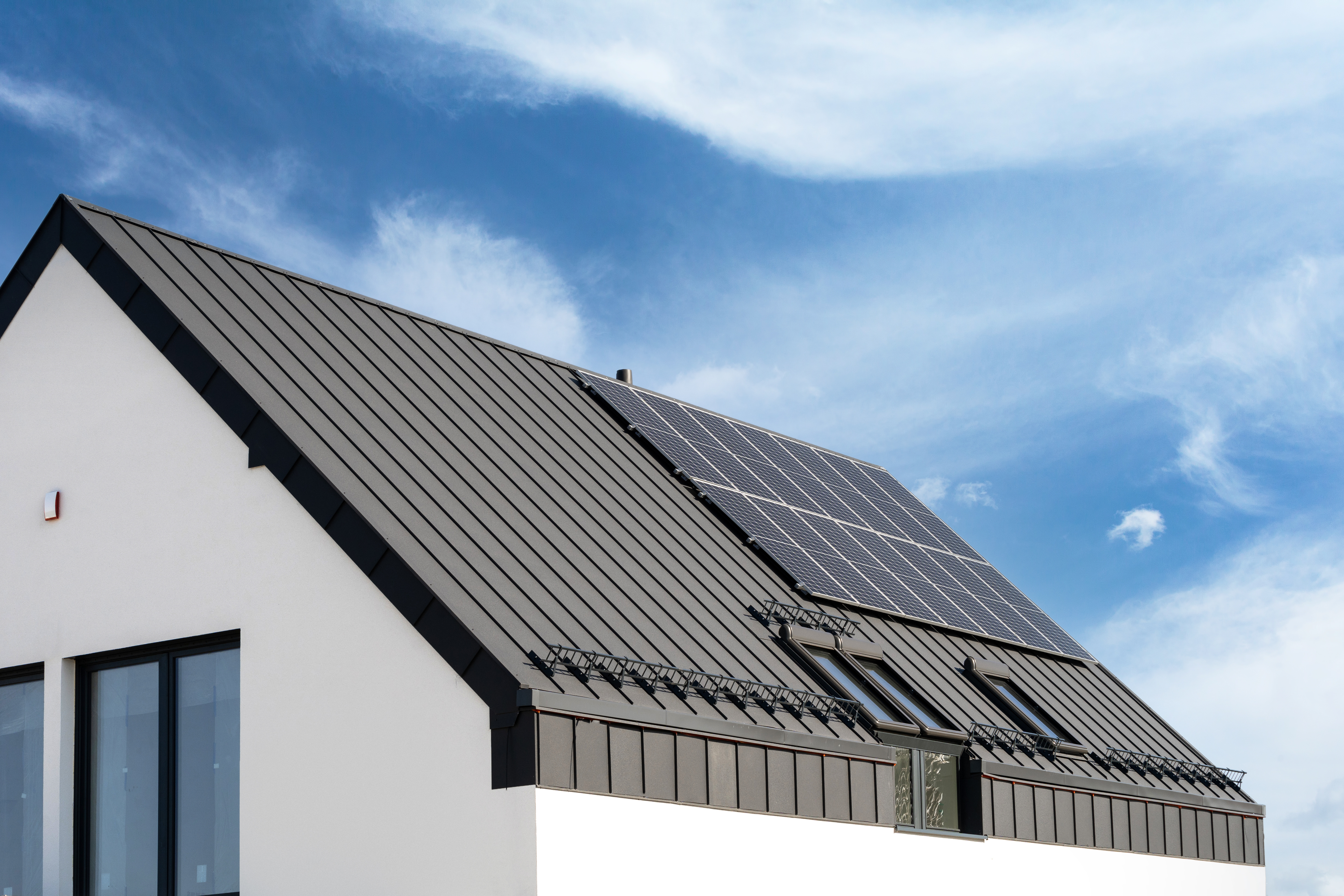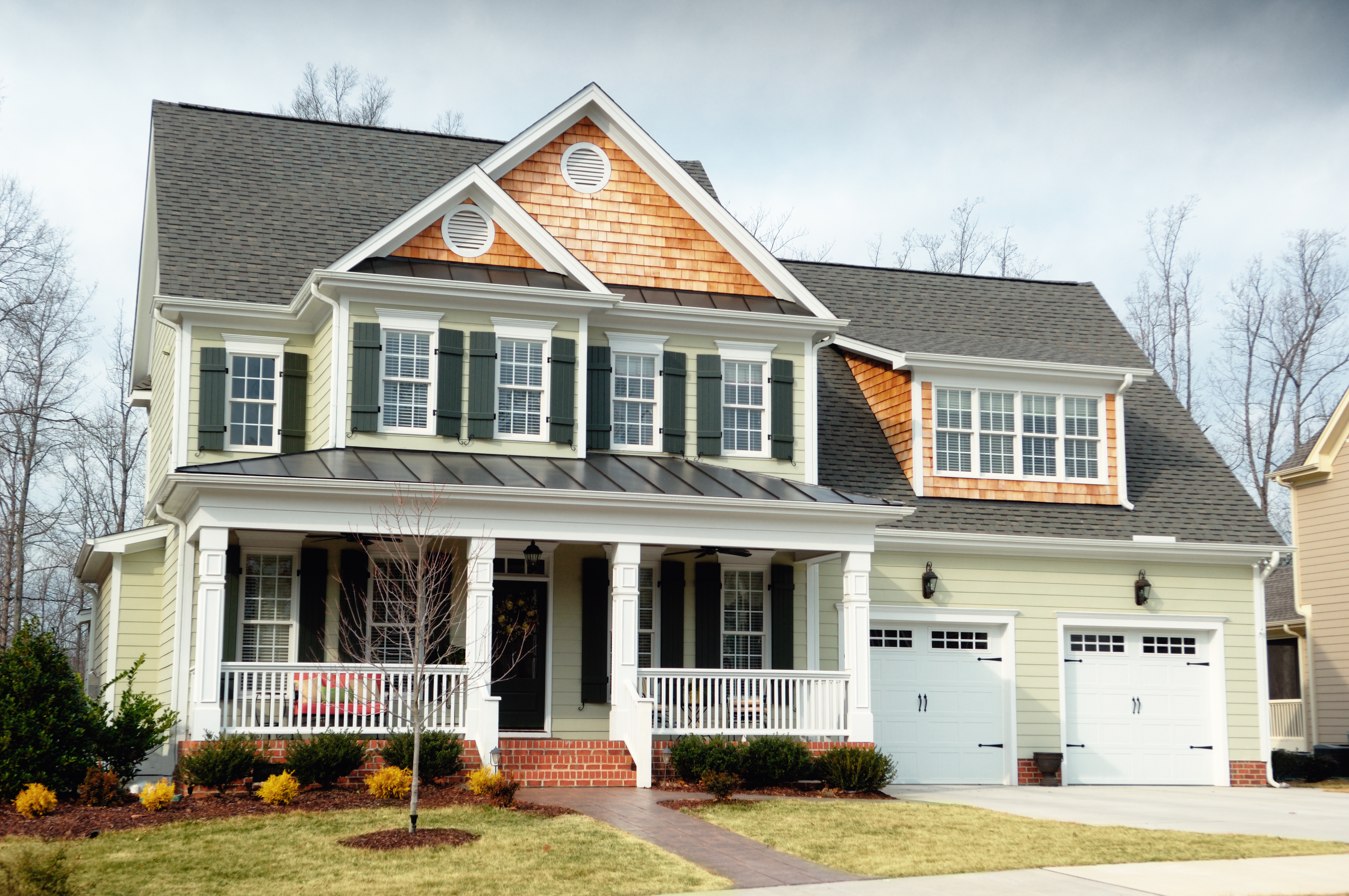
A metal roof can defend your home against Ohio’s varying weather conditions. Learn how much a metal roof costs in Columbus, OH.
Choosing between wood shakes and wood shingles has never been easier


Wood shakes offer a textured, hand-split rustic look.
Wood shingles provide a clean, crisp, manufactured look.
Both wood shakes and shingles are long-lasting and environmentally friendly.
If you love an elegant wood roof, you’ve undoubtedly come across wood shakes and shingles. While both look classic and charming, there are differences between the two—and it comes down to the manufacturing process. Our guide will show you the key differences between wood shakes versus wood shingles so you can decide which is best for your home.
Wood shakes are a timeless roofing material. Wood shakes come from hand-split logs that are reshaped into a rectangle through manufacturing, giving them a rustic aesthetic.
Because they’re hand-split, wood shakes come in varying sizes and thicknesses, making them a popular choice if you want to achieve a classic colonial or chic mountain-style look.
The most common wood shakes are from cedar trees, but you can also find wood shakes from cypress, pine, and redwood trees. In addition, there are also varying types of each wood shake material, with top-grade cedar shakes costing 30% to 50% more.

The difference between wood shakes and wood shingles comes down to manufacturing. As stated above, wood shakes are hand-split from trees and remastered using power equipment.
Wood shingles are machine-made with the use of saws. So, wood shingles come out smooth, and wood shakes are textured. Both wood shakes and shingles provide a natural, homey aesthetic that will give you many years of architectural roofing bliss.
If you aren’t sure which option would be right for your home, contact a local roofer for expert advice.

Wood shakes provide protection and comfort from storms and other weather-related elements. Yet, they are also cost-prohibitive and can be a fire hazard.
Durable
Beautiful appearance
Protects against UV sunlight, hail, wind, and heavy rain
Natural insulator
Eco-friendly
Long-lasting
Versatile
Higher-priced
More difficult to install
Heavy material
Requires a lot of maintenance
Highly flammable

Wood shingles provide a smooth, uniform look while protecting your home from rain and high winds. But they’re also not fire resistant, and they require extensive maintenance.
Durable
Lightweight
Protects against high winds and UV sunlight
Long-lasting
High curb appeal
Energy-efficient
Eco-friendly
Easy installation
Versatile
Not insect-resistant
Prone to rot
Highly flammable
Requires a lot of maintenance

See whether wood shakes or wood shingles are a better fit for you depending on their appearance, customizations, ease of installation, maintenance, and more.
Wood shakes have a rustic, country home feel due to their hand-split, highly textured aesthetic. Wood shingles are smooth and uniform due to being sawn on both sides.
When deciding between shingles versus shakes, it ultimately comes down to preference—both shakes and shingles offer a timeless design.
Most visually appealing: Tie
Both wood shake and wood shingle roofs come in a variety of wood species, colors, grain cuts, and sizes (shingles range from 3/8 to 1/2 inches thick, and shakes range from 1/2 to 3/4 inches thick).
Also, you can enhance wood shakes and shingles to resist fire and fungus. Because of the manufacturing process, wood shingles provide more options for shape, color, finish, and style (diamond, fish scale, steam-bent, and sawtooth).
Best options and customizations: Wood shingles
Wood shingles are machine-sawn, with varying cuts going along and against the grain. Wood shakes are hand-split, with one of its sides always going along the grain.
Because wood shakes always go along the grain, this provides more resistance against wind, hail, UV sunlight, and rain—making wood shakes the more durable choice.
Most durable: Wood shakes
Cedar shake roofing costs an average of $21,500, whereas the average cost for a shingle roof installation is $12,000. Wood shakes usually cost more than shingles because they’re thicker than shingles and more complex to install.
Better price: Wood shingles
Wood shakes require a skilled roofing contractor near you to install them properly because they do not lay perfectly beside each other due to their various textures. You’ll need to ensure proper installation of your wood shake roof, covering all gaps and adding felt interlayment between each row, or you’ll have a lot of maintenance issues down the road.
Wood shingle installation requires an expert roofing contractor. Still, it isn’t nearly as difficult to install as wood shakes because of their sawn shape, allowing them to lay flat and easily overlap each other to help seal your roof.
Easiest to install: Wood shingles
Most wood shakes require a complete replacement because it’s challenging to repair a broken shake. Wood shingles are easier to repair and usually don’t require a total replacement to treat a damaged shingle.
Easier to repair: Wood shingles
Both wood shakes and wood shingles are high-maintenance roofing choices. Both require frequent coating protection against rot, algae, mold, fungus, and insects. They also both require deep cleanings every five to seven years.
On average, the cost to maintain your cedar shake roof will run between $300 and $600 or $0.20 to $0.60 per square foot.
Requires the most maintenance: Tie
Wood shake roofs can last up to 50 years if you maintain them. Wood shingle roofs can last 30 to 40 years if well maintained.
Although, the longevity of these roofs ultimately depend on the materials used, the installation quality, the weather conditions where you live, and your yearly maintenance schedule.
Longest-lasting roof: Wood shake
Both wood shakes and wood shingles are natural insulators for your home. They retain heat in the winter, making your home nice and toasty, and keep your home cool in the summer. In addition to being energy efficient, wood shakes and shingles keep your energy costs down, which is a win-win.
The most energy efficient: Tie
In terms of being environmentally friendly, wood shakes and shingles are both good choices. Both wood shakes and shingles are sustainable, recyclable materials. Cedar, for example, uses low energy consumption during the manufacturing process. And, because cedar is a natural woodland element, there’s no need to use hazardous chemicals during the production phase.
Most sustainable: Tie
There’s no doubt that beautiful wood shakes and wood shingles increase your home’s resale value. Aside from being eye-catching, wood shakes and shingles are highly durable, especially in harsh climate environments. Their energy efficiency is another win. And wood shakes and shingles look more distinguished with age, which is another resale boost.
Better resale value: Tie
From average costs to expert advice, get all the answers you need to get your job done.

A metal roof can defend your home against Ohio’s varying weather conditions. Learn how much a metal roof costs in Columbus, OH.

Learn about roof replacement costs in Columbus and what factors are at play to budget accurately and make sure you’re getting a fair price.

Dealing with a visibly damaged roof or leak? Learn about roof repair costs in Columbus to see how much you’ll need to budget for a permanent solution.

There is a calculation for how many soffit vents you need, depending on your square footage. Discover where to install them and what happens to your attic air during winter.

Understanding roof rafter sizes is critical to ensure your project is structurally sound and up to code. Learn about sizes, spacing, and code requirements.

Your home's new tin roof cost will depend on several factors, including its size, materials, style chosen, complexity, and added options.